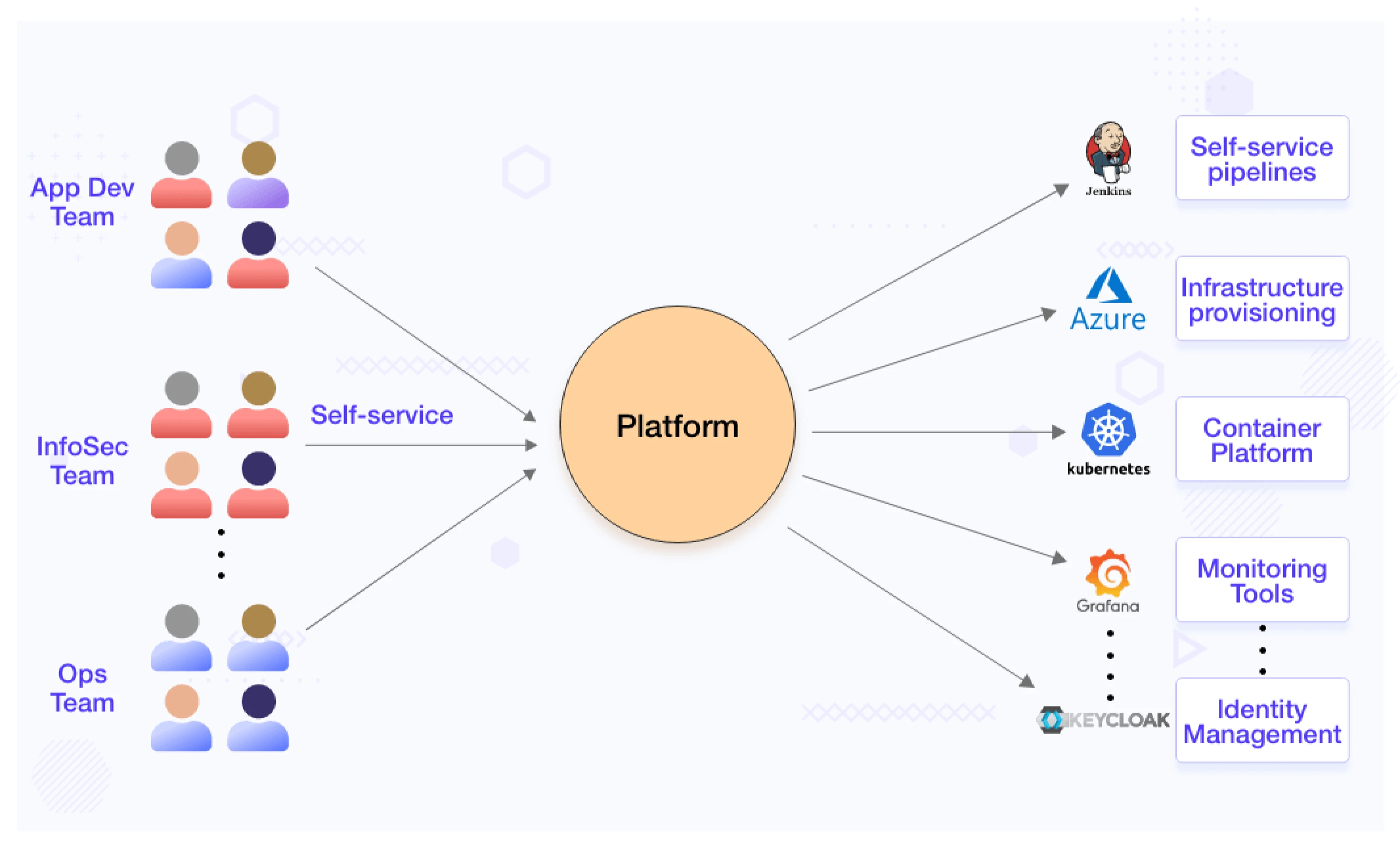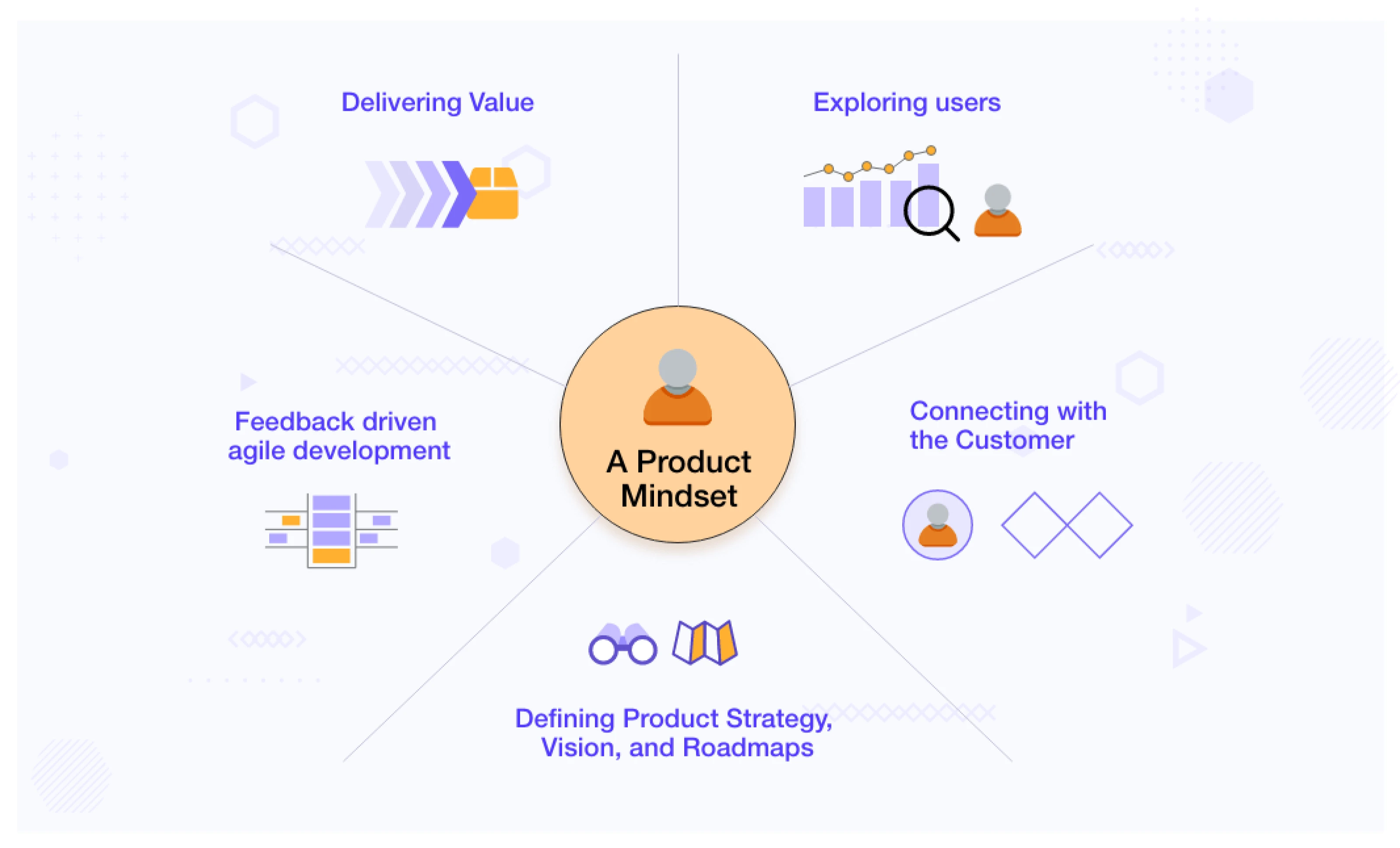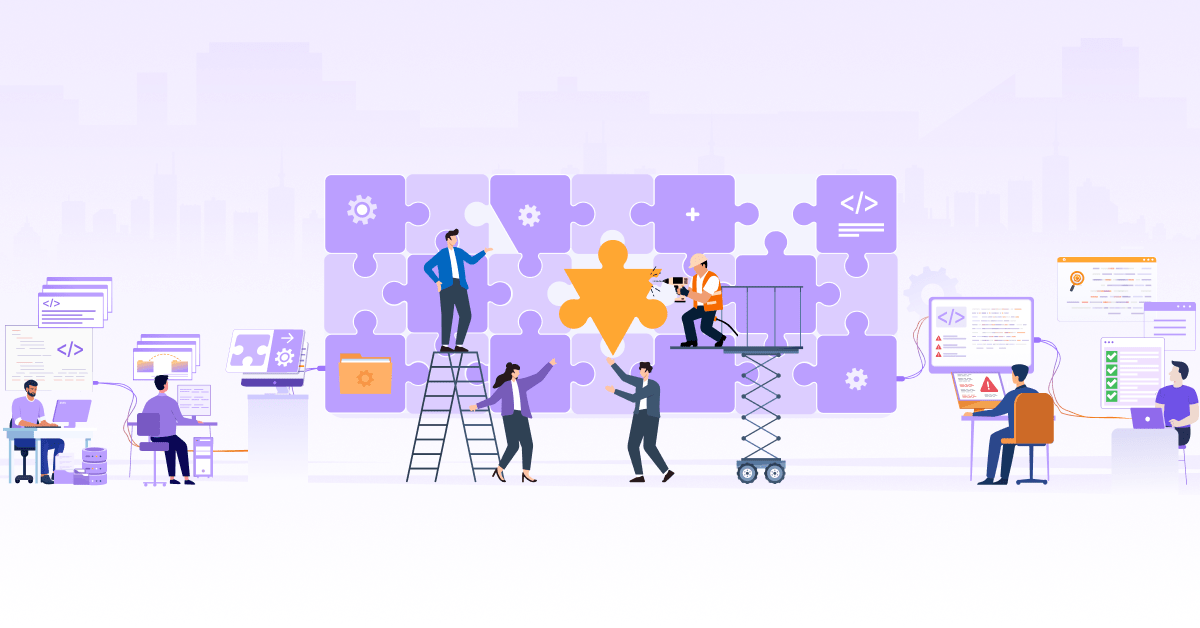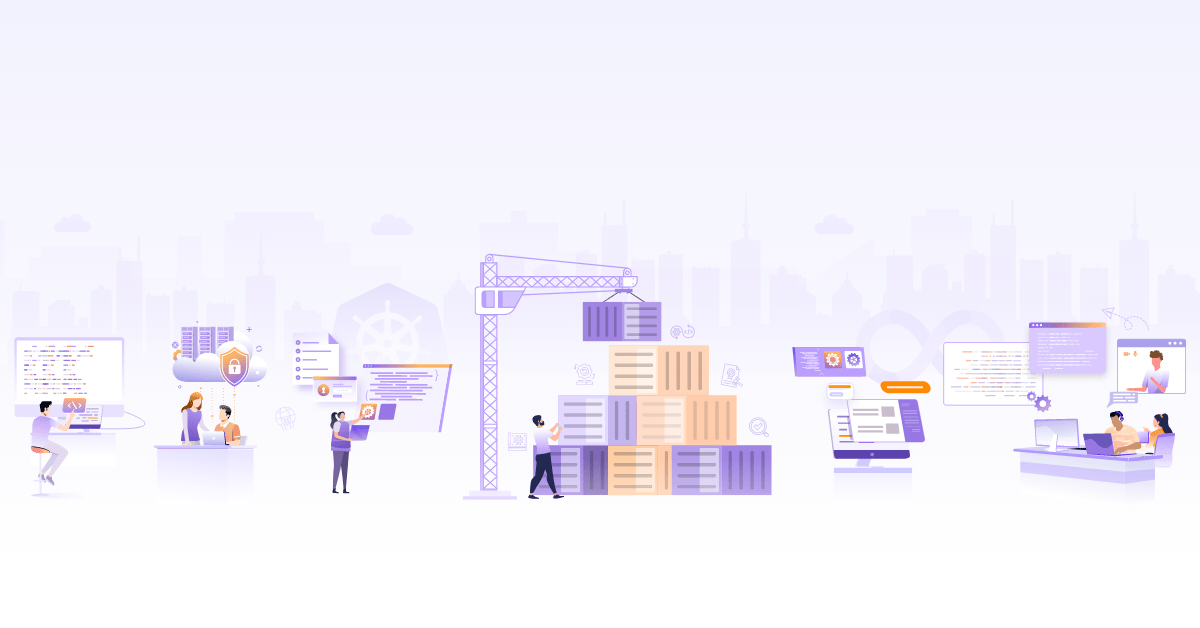
Platform Engineering 101: Get Started with Platforms

In the decade of 2010 - the development & operations teams aligned with DevOps movement & technologies/paradigms such as containers, infrastructure as code, and policy as code enabled a whole new way of delivering software to end users faster. But one side effect was the explosion in technologies & tools available which added to the cognitive load of engineers.
For the engineering teams, these new responsibilities demanded new skills and time for non-core tasks. Recognizing this, some early adopters and organizations rethought the practices and started building platforms that would empower developers to reduce their cognitive load and enable them to focus on application development. We spoke about this phenomenon in detail in a previous post “DevOps is the natural evolution of Platform Engineering”.
In this blog post, we’ll take a deep dive into the world of platform engineering, understanding its principles, benefits, and how it revolutionized the collaboration between developers and operations teams.
The Era of Platforms
The concept of a platform began to gain traction with the increasing adoption of cloud technologies as well as the growing complexity of applications. The need for a platform arose to bridge the gap between developers and operations teams. But what exactly is a platform?
A platform is an interface for developers that enables access to underlying infrastructure technologies & abstractions such as a VM or a database service. Its primary goal is to abstract away the complexities of various tools, and services and provide a unified platform for developers. This way a platform empowers developers to focus on their core expertise rather than focusing on deep expertise in all of the underlying layers.

Let us look into some of the benefits of platforms:
-
Abstraction of complexity: Platforms provide a layer of abstraction that makes it easy to access underlying tools without needing deep expertise. If they want to dive deeper, it does not stop them but it allows an abstraction where needed. By doing so, developers can focus on building applications rather than being tangled in the intricacies of infrastructure. This reduces the learning curve significantly and enables faster interaction and eventually faster time to market.
-
Standardization: With a unified set of tools and processes, platforms provide developers with a well-defined ecosystem gluing together applications and infrastructure. Standardization enables better collaboration between different teams, as everyone would follow the same set of tools and processes which fosters collaboration and a cohesive approach to application development.
-
Focus on core expertise: Instead of spending time mastering the infrastructure technologies & practices, platforms allow developers to focus on their core expertise. They can dedicate their time to focusing on new features that matter to the end-user or fixing an annoying bug being faced by a subset of users and improving application performance instead of focusing on learning the infrastructure-related technologies and doing tasks. This also leads to better developer satisfaction which eventually translates into high-quality applications.
What is Platform Engineering?
Platform engineering is the art and science of designing, building, and maintaining platforms. It is all about optimizing developer experience and boosting productivity by enabling self-service capabilities. This approach involves leveraging reusable components and services to create a unified and standardized platform.
Organizations can choose to have a dedicated platform engineering team depending on their size. A small startup might not need it, a midsized company could leverage some of its existing engineers while a large organization might find it essential to have a dedicated platform engineering team. In fact, of all the platform teams, 27% of platform teams have been formed in the last 2-3 years as per the State of DevOps Survey 2023.
Principles of Platform Engineering
A successful platform engineering team is governed by a set of principles. These principles lay the groundwork for designing, building, and maintaining platforms. Understanding these principles is crucial for platform teams and organizations at large for the success of their platforms.
-
Standardization: With teams using a diverse set of tools and processes, collaboration becomes critical. And that’s why standardization is the core principle of platform engineering. It helps promote consistency and efficiency across the development process. Standardization helps determine best practices, coding standards, architectural patterns, and a clear set of guidelines that helps create a cohesive and productive development environment.
-
Automation: Platform teams must seek opportunities to automate repetitive and time-consuming tasks like infrastructure provisioning, application deployment, and testing. With automation, developers can spin up development environments that are consistent and reliable. Automation not only reduces the time but also reduces human errors that can creep in and slow down the process.
-
Abstraction: Abstraction is a key principle of platform engineering as we want our developers to focus on their core expertise only. With abstraction, we can shield our developers from the complexities of the underlying infrastructure and in turn simplify development and improve collaboration. While abstraction is important, the level of abstraction is critical. While that is a completely different area for discussion, it’s important to strike a balance between flexibility and abstraction.
These principles provide a solid foundation and emphasize automation, scalability, and reliability. However, with the evolving technology landscape, a fresh mindset is required that goes beyond the conventional norms - Platform as a Product. In the following section, we delve into how this innovative approach takes these principles and infuses them with the product mindset.
Platform as a Product
Platform as a product isn’t just a semantic change, rather it’s a fundamental change in the way organizations approach platform engineering. Rather than focusing only on the technical aspects, tooling, and roles for the platform, the product mindset allows them to embrace design thinking and continuous improvement to name a few.
Here are some benefits of having a product mindset for your platforms:
-
Value proposition: Having a product mindset helps define a value proposition for your platform. Organizations can highlight how platforms can help solve the pain points of their end users, boost their productivity, and contribute to the larger business goals as well.
-
Focus on user personas: With the product mindset, platform engineers can focus on building the platform for different users who have varied requirements. This allows them to create an environment that empowers their users and teams.
-
Emphasis on user experience: Treating a platform like any other customer-facing product ensures that the team prioritizes user experience. It ensures that the platform is intuitive and user-friendly, and improves the productivity of its users.
-
Iterative improvement: One of the biggest advantages of adopting the product mindset is iterative improvement. Based on user feedback, performance metrics, and changing requirements, organizations can build a platform that’s agile and responsive.

These were a handful of benefits of having a product mindset for building platforms. This approach transforms the way teams build platforms, keeping their users in the spotlight and looking beyond the technical functionalities.
DevOps vs Platform Engineering
DevOps and platform engineering are two transformative methodologies that have emerged in recent years and each of them addresses different aspects of software development. While DevOps is centered around breaking silos and fostering collaboration between developers and operations teams, platform engineering focuses on creating a unified platform that empowers developers to focus on their core expertise.
The below table lists the differences between both approaches:
| Factors | DevOps | Platform Engineering |
|---|---|---|
| Objective | Streamline development and operations | Provide a unified and standardized platform for developers across development, operations, reliability, security & cost |
| Principles | Collaboration, Automation, CI, CD | Enable collaboration, Platform as a Product, Abstraction, Standardization, Automation |
| Scope | Extends to the entire software delivery lifecycle | Foster collaboration between dev and ops teams by providing a consistent environment for the entire lifecycle. |
| Tools | Uses a wide range of tools at different stages in the lifecycle | Integrates diverse set of tools into the platform |
| Benefits | Faster development & deployment cycles, faster time-to-market, higher collaboration | Efficient and streamlined development environment, improved productivity, and flexibility for developers |
At their core, both DevOps and platform engineering aim to improve the developer experience and quicken the development and deployment cycles thus reducing the time to market. All of these are possible with a set of tools. While DevOps employs different tools at different stages, platform engineering has its own set of tools that help build platforms.
Platform Engineering Tools
From automation solutions to application discovery and integration, there are tools that aid platform engineering teams in building, maintaining, and optimizing robust platforms. These tools help build platforms, enable seamless collaboration, and increase developer experience.
While organizations can choose to build platforms from scratch, there are a lot of tools in the market that help build platforms with basic capabilities built in. Below are some of the popular platform engineering tools.
-
Backstage: Backstage is an open source platform engineering tool developed by Spotify. It provides a unified interface for developers to access all the essential tools and services needed to build and manage applications. Its key features include a service catalog, enabling developers to discover and utilize internal tools seamlessly. It has support for plugins that make it easy to integrate it with other tools. Backstage facilitates easy collaboration between teams, improving visibility and knowledge sharing across the organization. Vaibhav shares how you can start platform engineering journey with Backstage in this detailed blog. He explores Backstage’s key features and benefits, revealing how it helps in the development process in depth.
-
Kratix: Kratix is another open source platform engineering tool designed to automate infrastructure management and streamline the development process. It supports platform teams that deliver a curated Kubernetes-native platform API. It leverages GitOps workflows and Kubernetes-native constructs that allow platform teams to build robust platforms. Kratix enables the injection of business-specific requirements by means of Kratix Promises.
-
Crossplane: Crossplane is an open source tool that automates infrastructure via declarative APIs. It helps create tailored platform solutions, automate resource provisioning reduce manual intervention, and enhance scalability and reliability. It comes with features like packages that provide extensibility and RBAC for security along with a suite of providers that allow it to provision infrastructure on external service.
-
Humanitec: Humanitec is a comprehensive platform engineering tool that empowers teams to easily build, deploy, and manage platforms. It helps you define a workload specification that can be used by Score, their platform orchestrator, to build enterprise-grade platforms faster. You can extend the functionality of your platform using drivers. Lastly, it has some predefined architectures for various cloud providers that you can leverage while building your platforms.
-
Port: Port is another platform that allows you to build developer platforms. It comes with a rich software catalog for microservices and CI/CD and allows you to bring your model and plug it in too. It has a role-based access control feature for enhanced security and a scorecard feature that helps you set quality standards for your platform engineering teams.
These were some of the popular tools that help platform engineering teams build platforms. With these tools and the guiding principles, developing platforms is relatively easier. However, you need to ask yourself one question, “Do you need a platform?” We help you answer that in the following section.
When do you need a Platform?
At this moment, when everyone is talking about a platform, it’s critical to understand that the decision to adopt a platform can greatly affect an organization’s efficiency and overall success. While platforms have emerged as powerful tools to streamline operations and improve productivity, it is essential to evaluate if you really need a platform.
In this section, we’ll explore some scenarios that warrant the need for a platform. We’ll delve into each of them and understand how platforms can play a pivotal role in improving the developer experience and eventually lead to faster development cycles.
-
Increased application complexity: As applications grow in complexity, it becomes critical for developers to focus on enhancing the application without worrying about anything else. Platforms also provide a standard, unified environment to simplify complex application development, deployment, and management.
-
Frequent releases: At a time when shipping fast is critical, a platform’s automation capabilities and integration with CI/CD pipelines are helpful. Platforms provide faster testing and deployment of applications that allow faster and more reliable deployments making them perfect for frequent releases.
-
Resource optimization: With a platform’s ability to automate infrastructure, provisioning, and de-provisioning, optimizing resources becomes easier. Platforms have the ability to scale resources based on demands avoiding unnecessary costs. This capability helps organizations pay only for the resources they use thus optimizing their resources.
-
Inconsistent environments: One of the biggest challenges that development teams face is inconsistency in the development, pre-production, and production setups. This hampers their productivity greatly which in turn leads to slower releases. Platforms eliminate this through automation and golden paths that ensure that your developers get a consistent environment.
-
Security & compliance: In this ever-evolving threat space, you need to ensure that your applications are secured and comply with industry standards and regulations. With platforms, you can enforce security best practices and coding standards which will ensure consistency across the teams. Thus adhering to standards and guidelines becomes easier.
-
Reduced time to market: Platform’s streamlined workflows and automation help organizations accelerate their software delivery process and respond to market demands faster. So if you have frequent releases then having a platform for your developers will surely help.
The points discussed above aren’t the only things that you must consider, but these can be a guiding light to help you decide whether the platform is the right fit for you. If your answer aligns with most of the points discussed above, it is advisable to invest in a platform.
A well-implemented platform empowers your team to streamline workflows, collaborate better, overcome challenges, and meet market demands with ease. All of it while keeping your teams happy.
Ready to get a Platform?
Reasons to get a platform become clear only when you consider the diverse requirements and challenges that your teams face. Each of the factors discussed in this blog post plays a crucial role in deciding to get a platform for driving efficiency, collaboration, and success of the development process.
Building platforms can be a complex and demanding task, requiring technical expertise and an in-depth understanding of both technology and business. At InfraCloud, we recognize the challenges of platform engineering and offer a team of seasoned platform engineers and architects whom you can trust. Let us handle the intricacies of building and maintaining your platform while you focus on your core business requirements.
Schedule a call with Aman to kickstart your journey towards an exceptional platform that empowers your organization to deliver more, always.
Also, do share your thoughts on this blog post, and platform engineering in general with me. Connect with me on LinkedIn or Twitter.
Exploring Platform Engineering? Read the other blogs from our Platform Engineering series:
- DevOps to Platform Engineering: How We Got Here?
- Decoding Workload Specification for Effective Platform Engineering
- Starting Platform Engineering Journey with Backstage
- Mastering Platform Engineering with Kratix
- How to Fail at Platform Engineering?
- Unlocking the Basics of Port
- Taking the Product Approach to Building Platforms
- Port vs Backstage - Choosing Your Internal Developer Portal
Building a Platform? Download our free Platform Engineering OSS Reference Architecture eBook!
Platform Engineering Glossary
Below is a list of common terms associated with platform engineering that you should know.
-
Platforms: Integrated environments that provide a cohesive foundation for developers to build, deploy, and manage applications efficiently, fostering collaboration and standardized workflows.
-
Platform as a Service (PaaS): A cloud computing service that provides a platform with preconfigured development tools, middleware, and runtime environment, enabling developers to focus on application code without worrying about infrastructure management.
-
Internal Developer Portal (IDP): A dedicated web portal within an organization that serves as a central hub for developers to access essential tools, services, and documentation, promoting collaboration and knowledge sharing.
-
Golden Paths: Standardized best practices and predefined workflows that guide developers through the development process, ensuring consistency and reducing errors in application deployment.
-
Self-Service: A user-friendly approach that allows developers to independently provision, manage, and scale resources without the need for manual intervention, enhancing productivity and agility.
Stay updated with latest in AI and Cloud Native tech
We hate 😖 spam as much as you do! You're in a safe company.
Only delivering solid AI & cloud native content.










